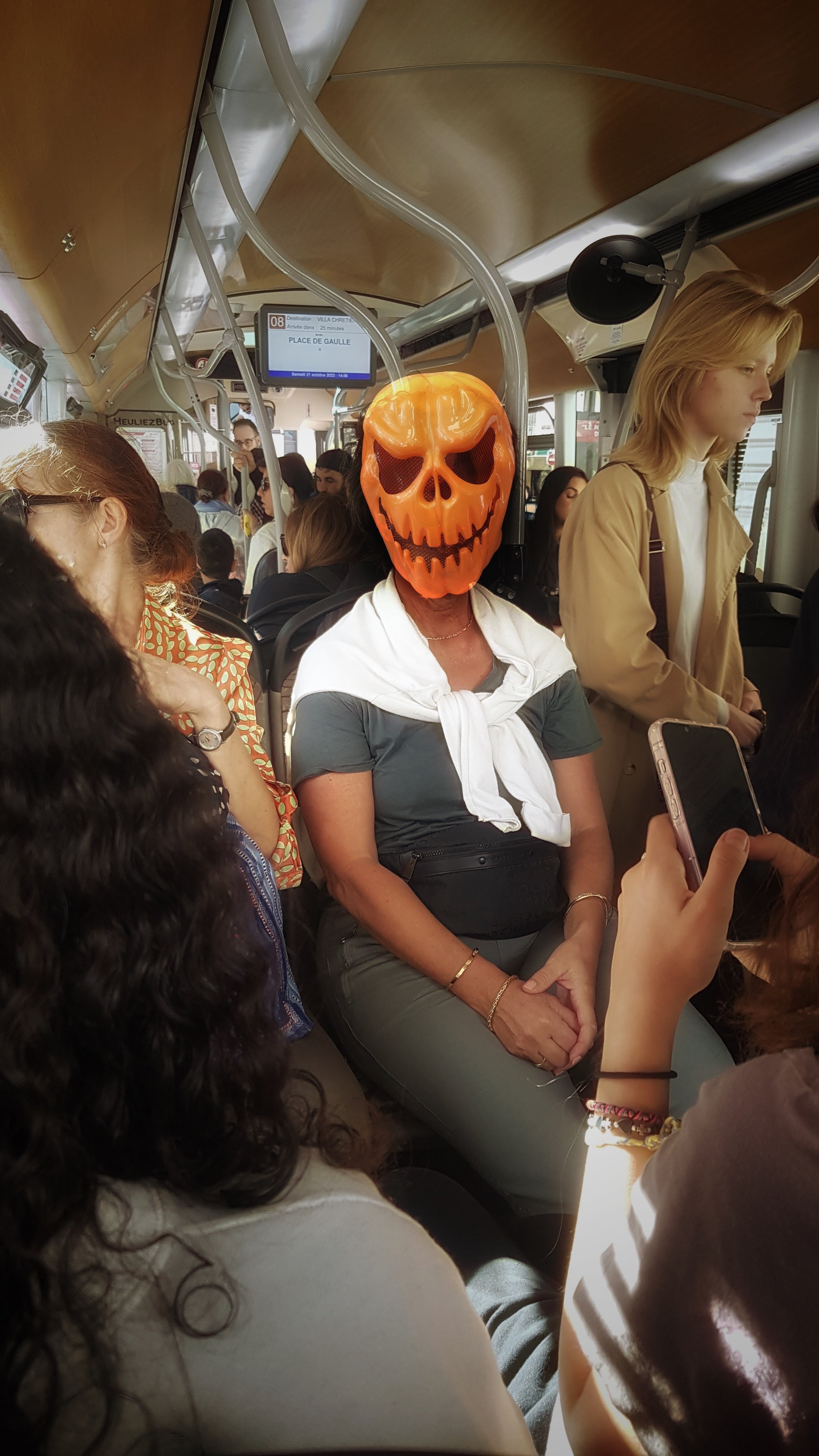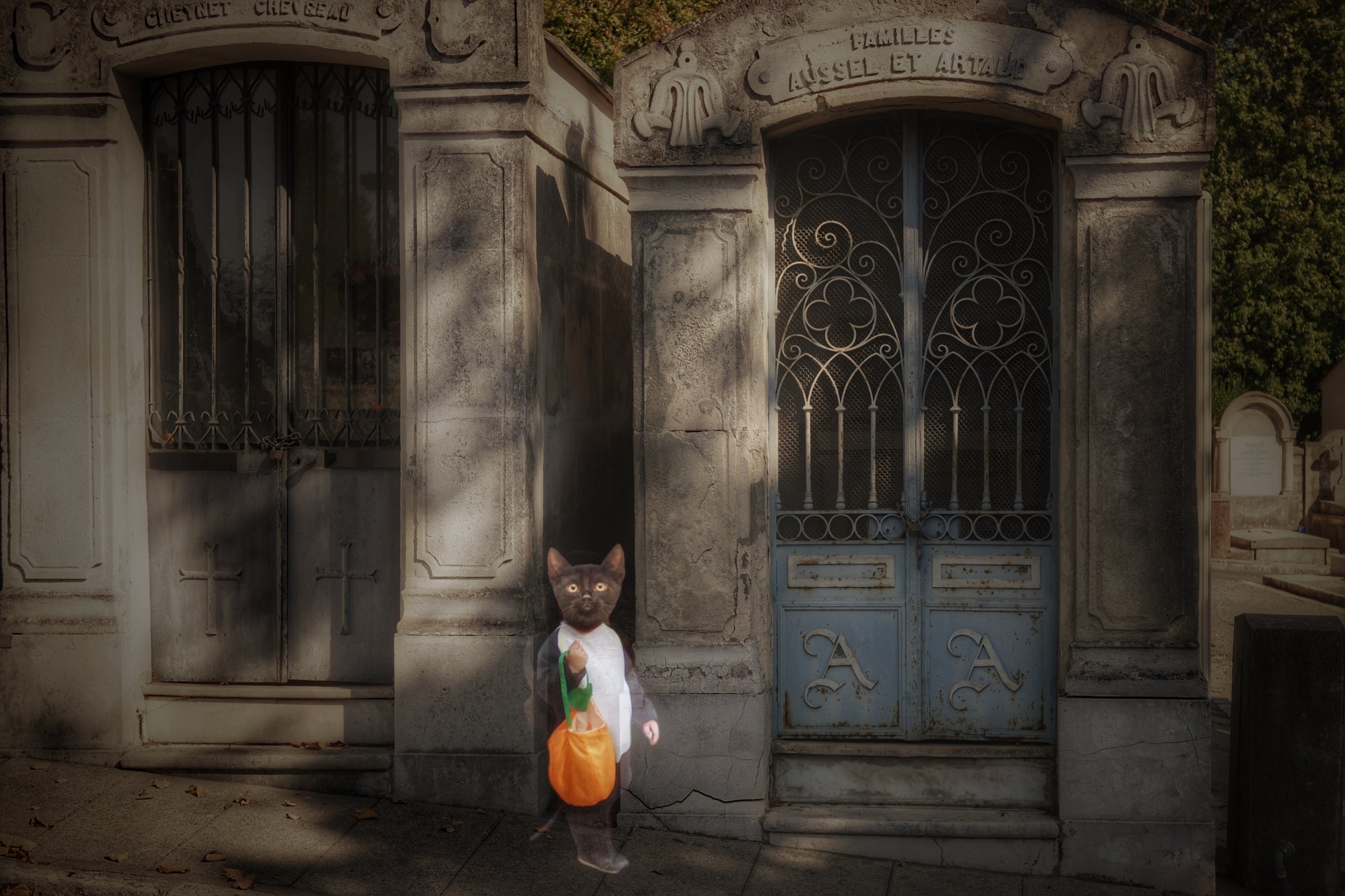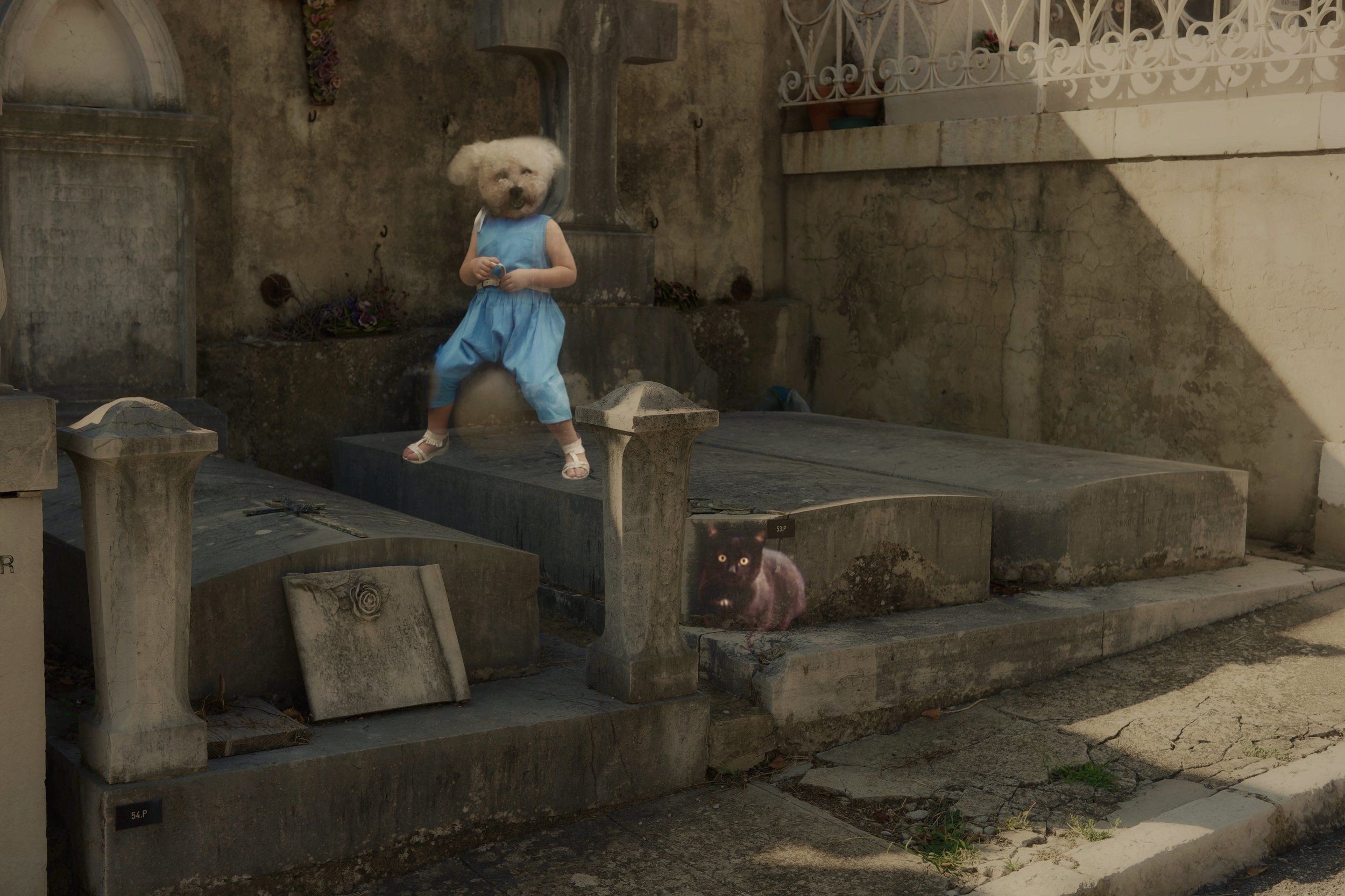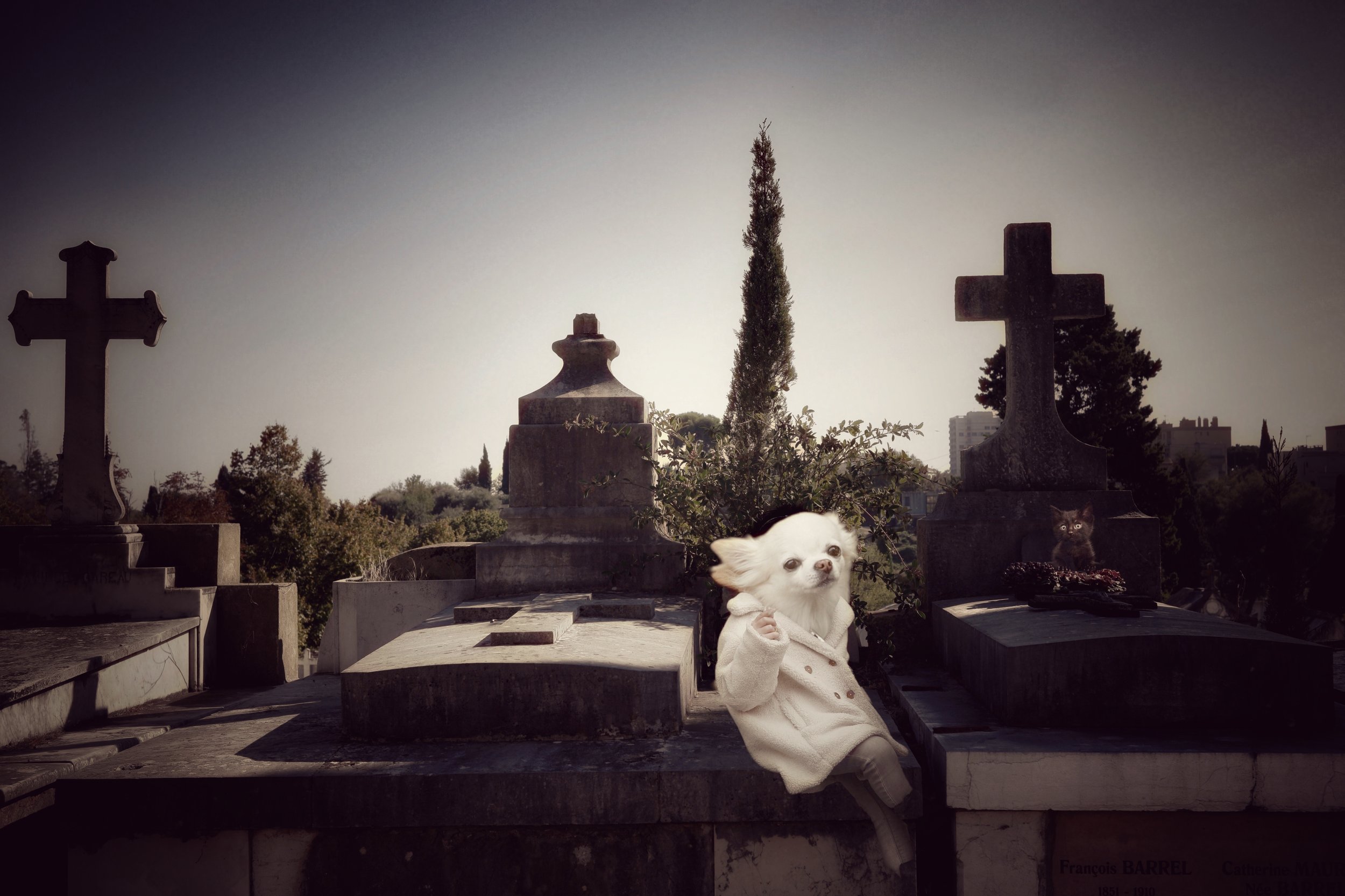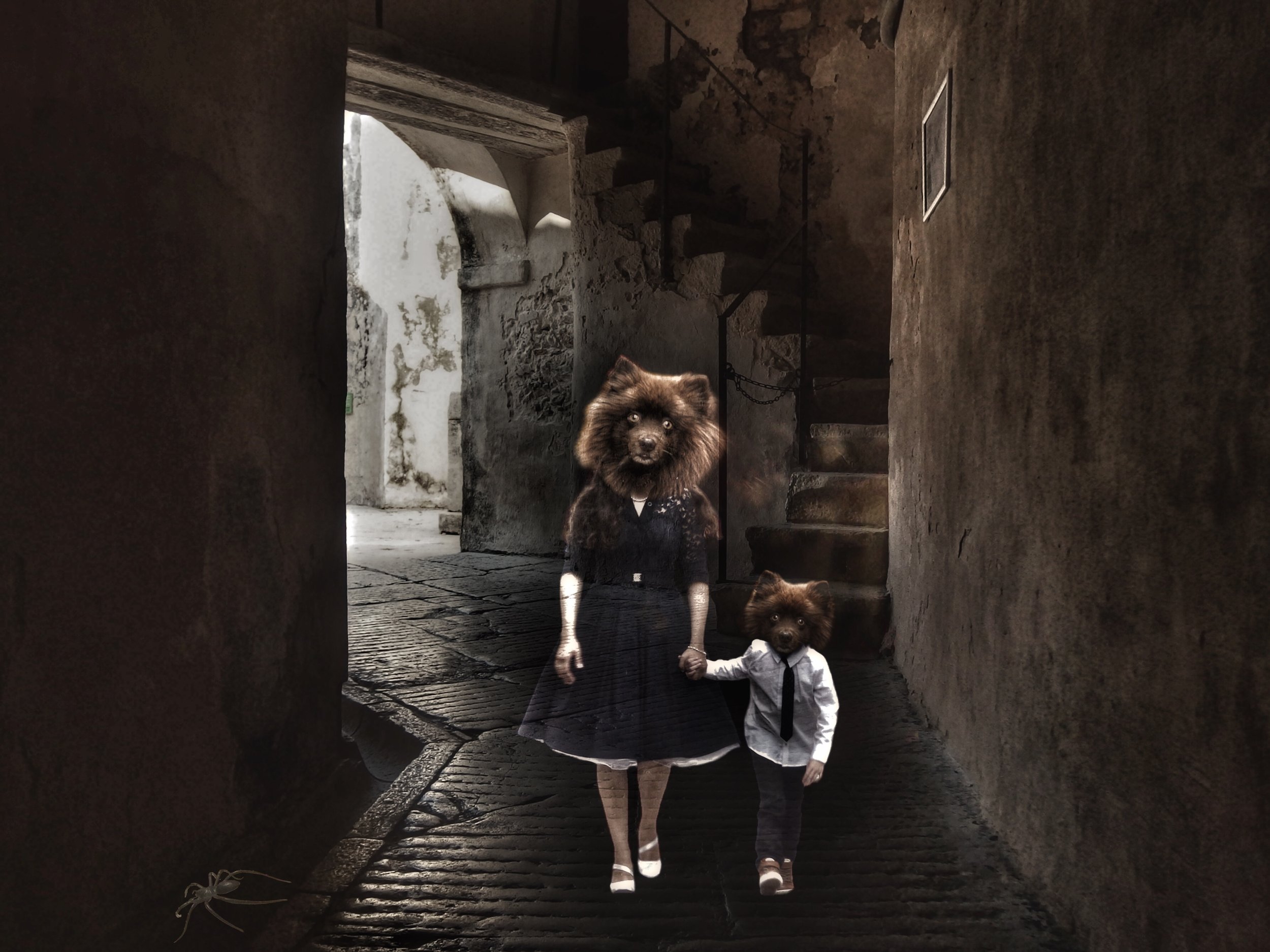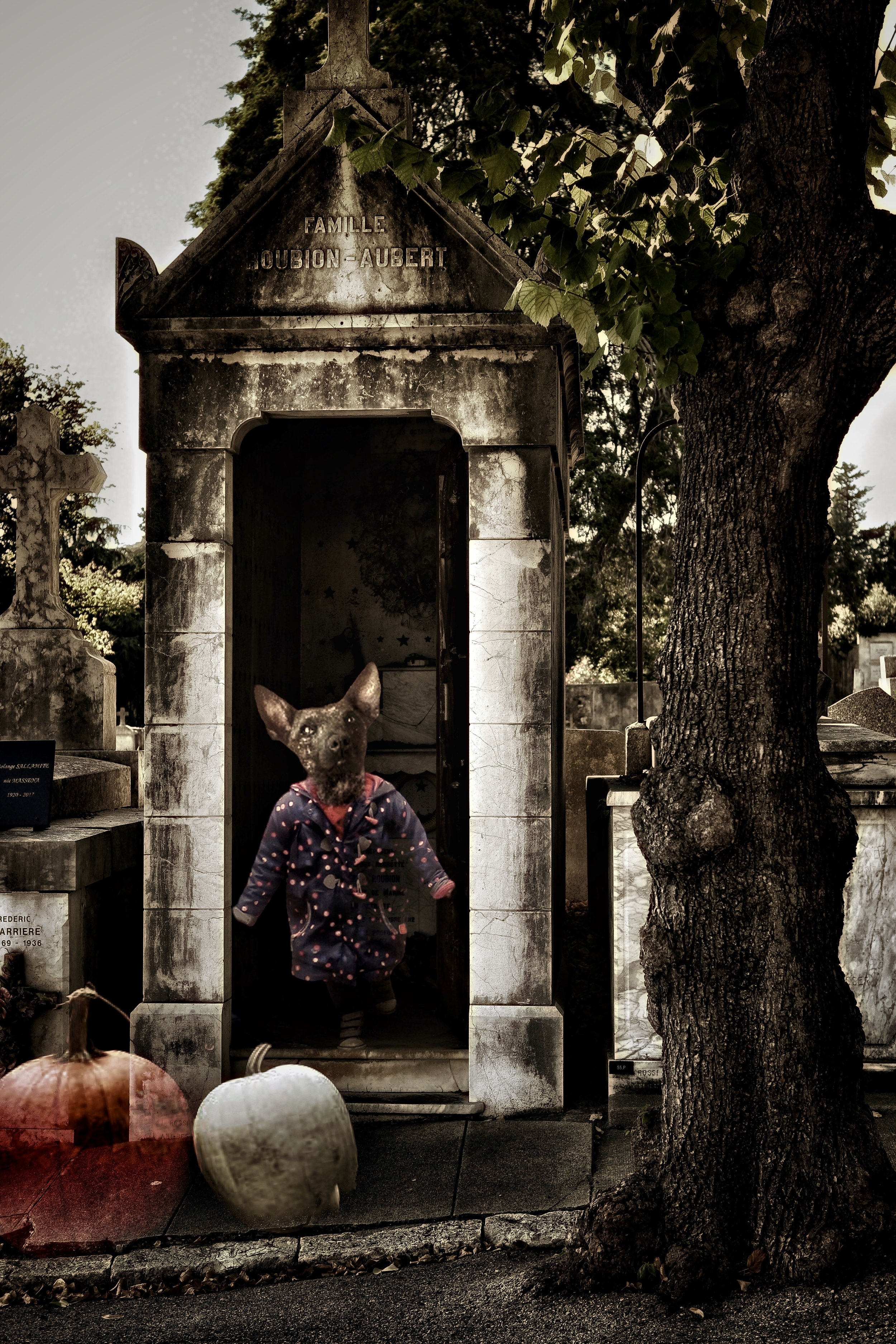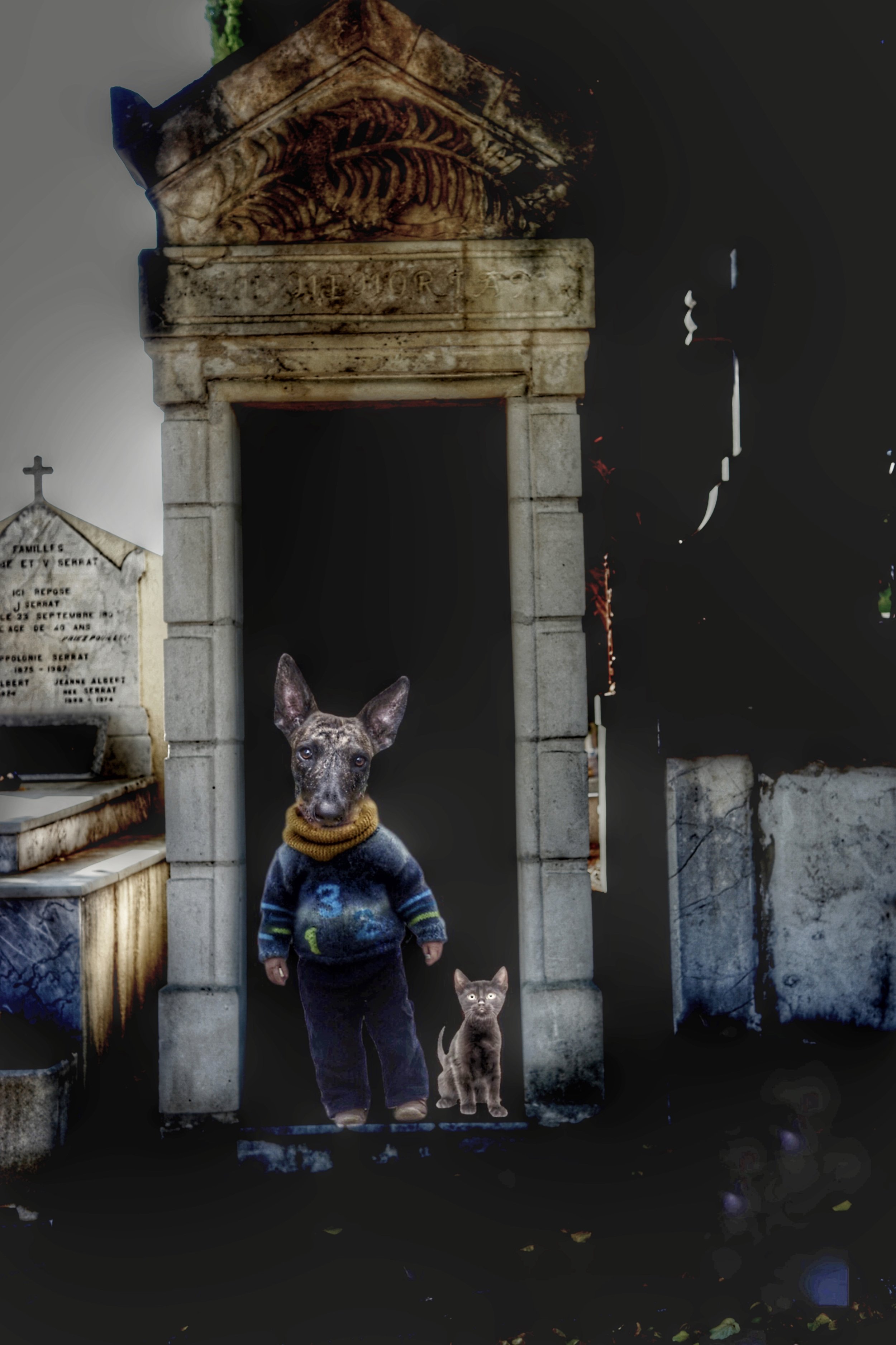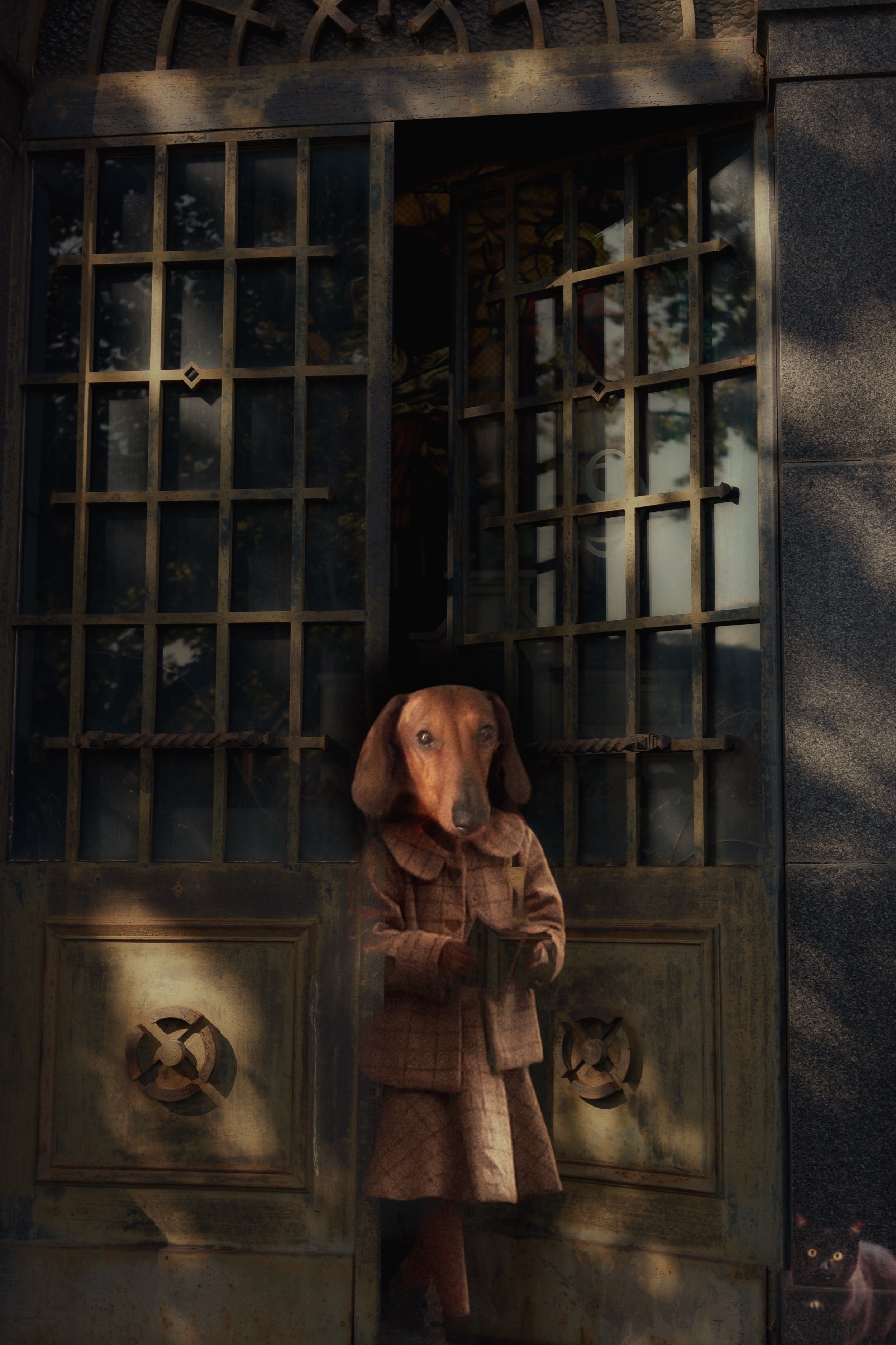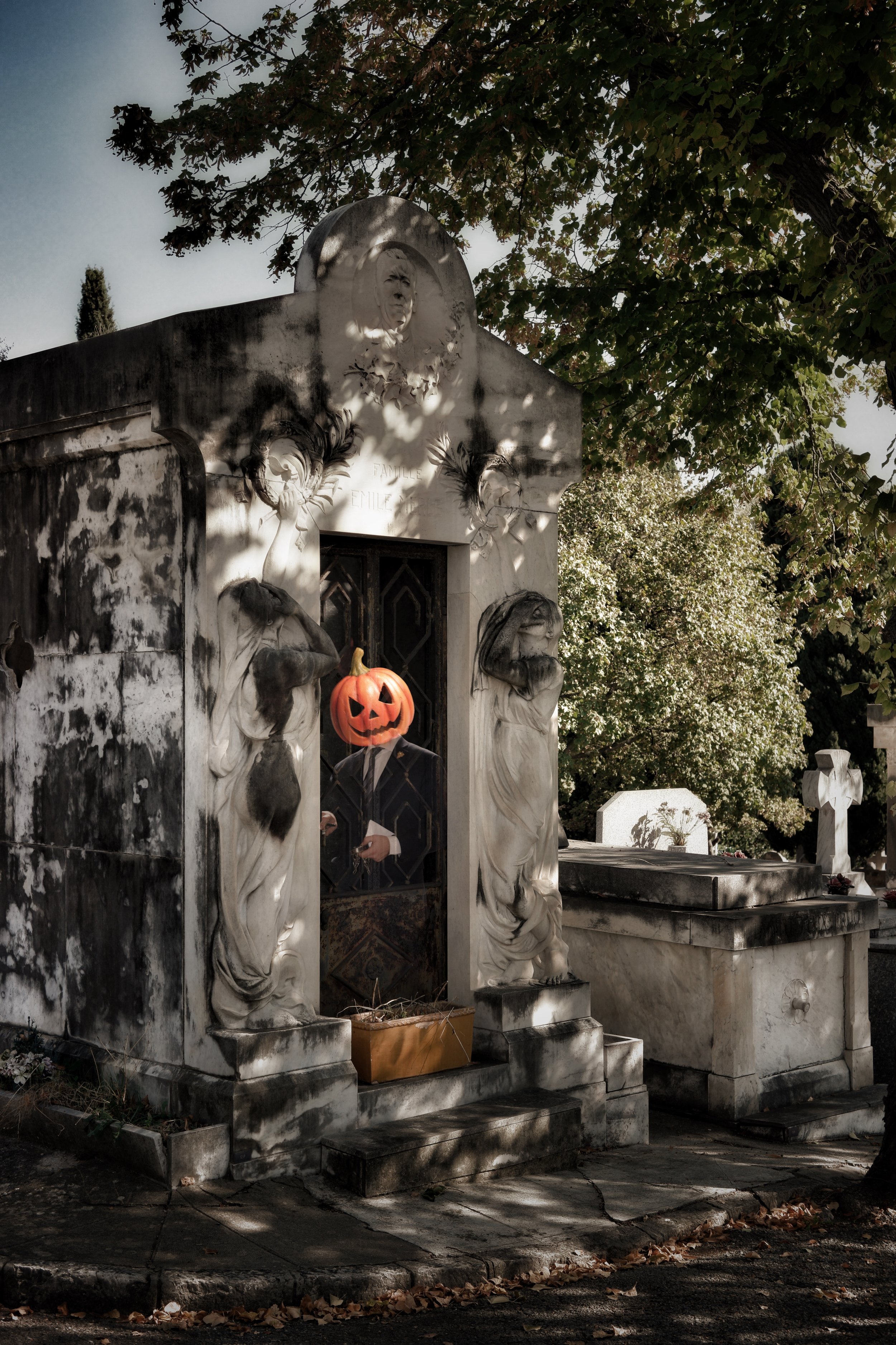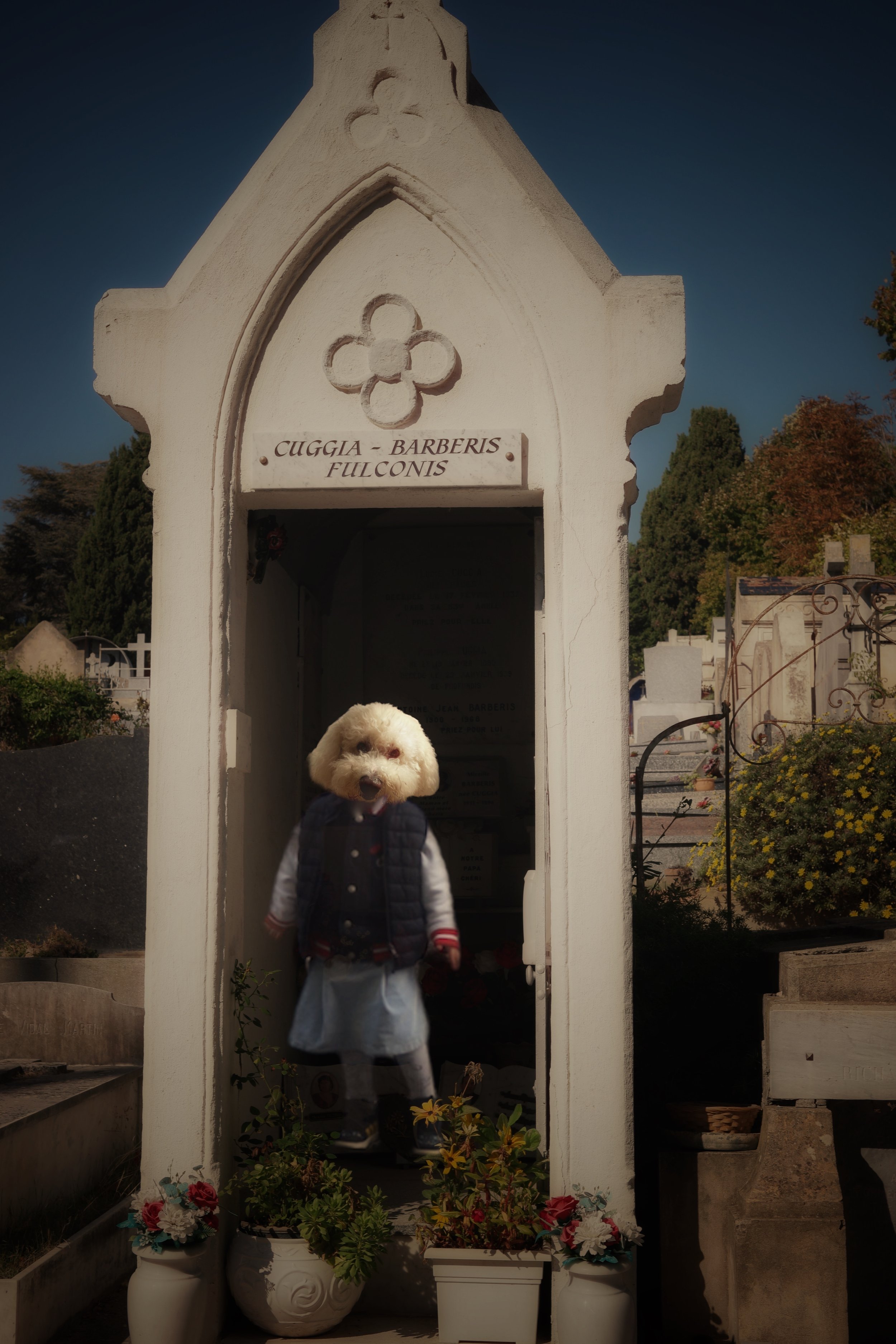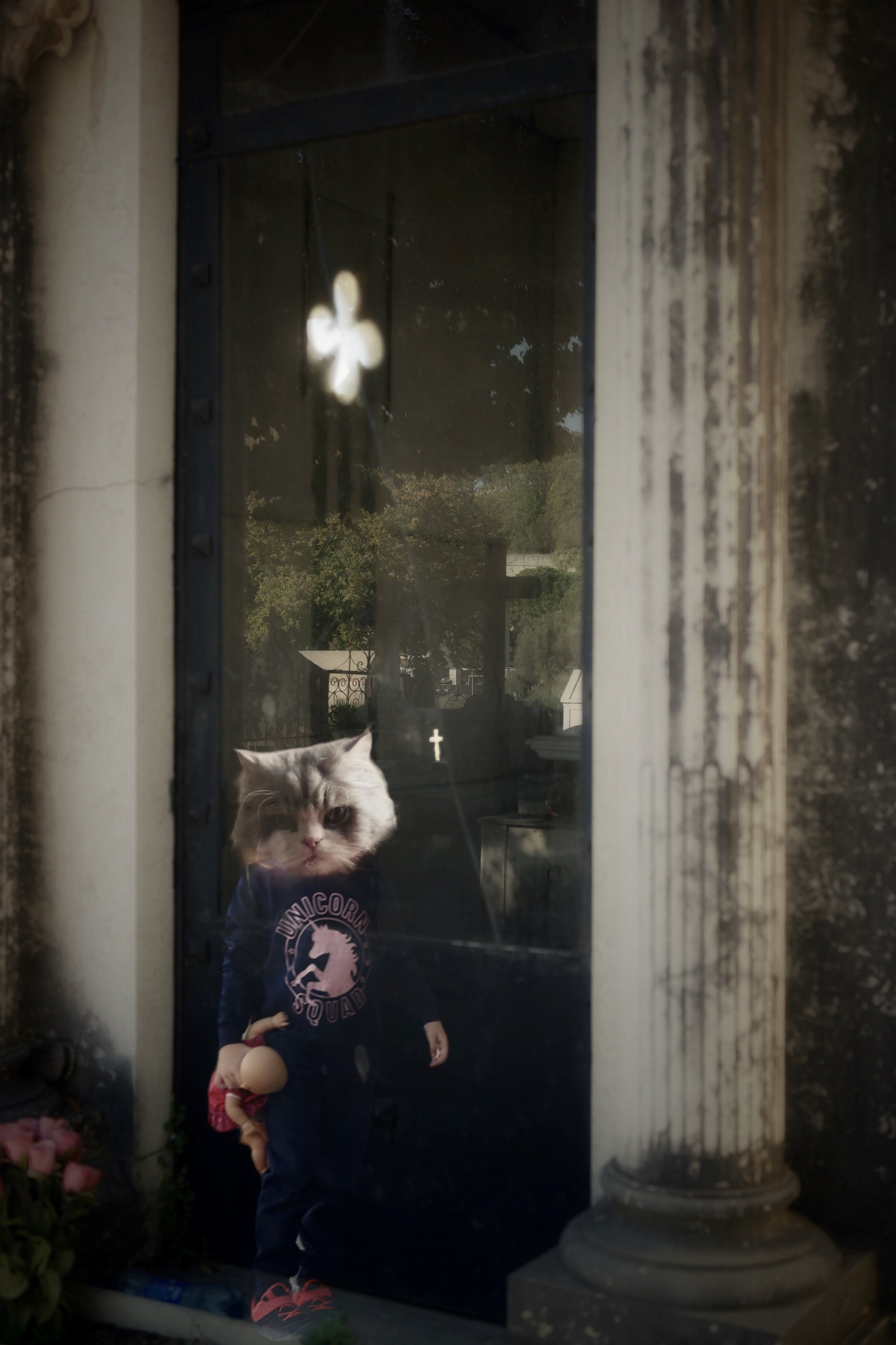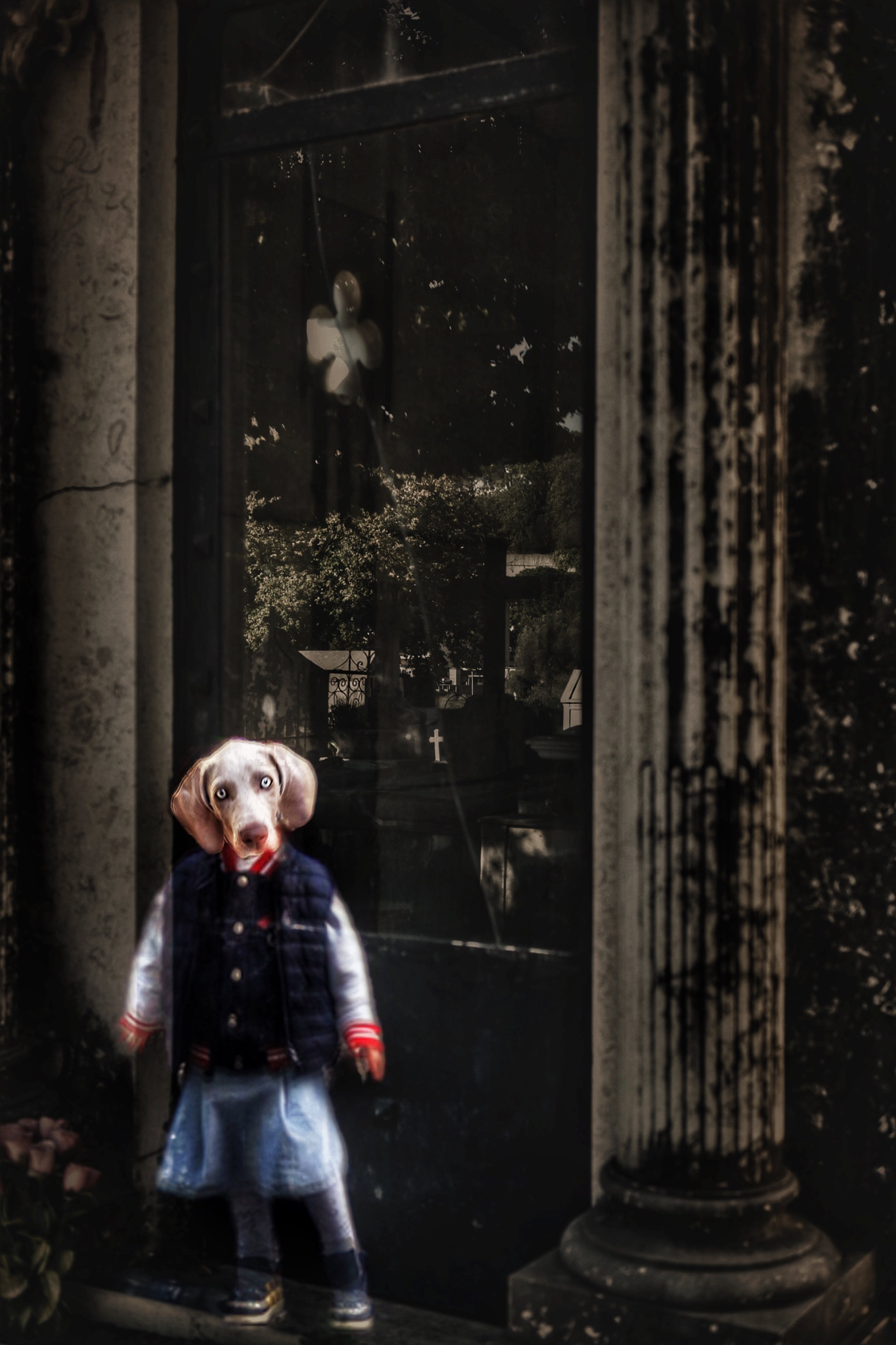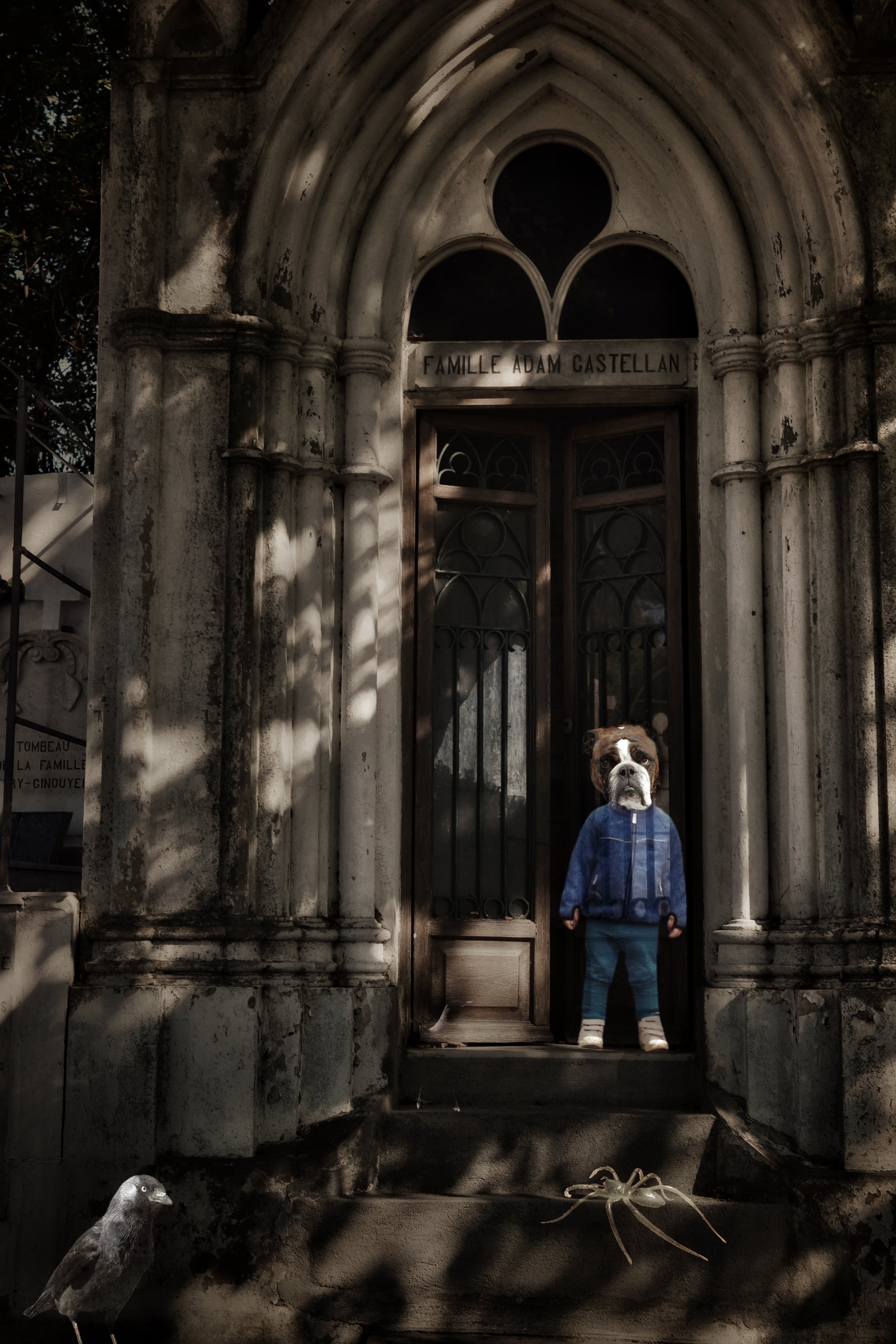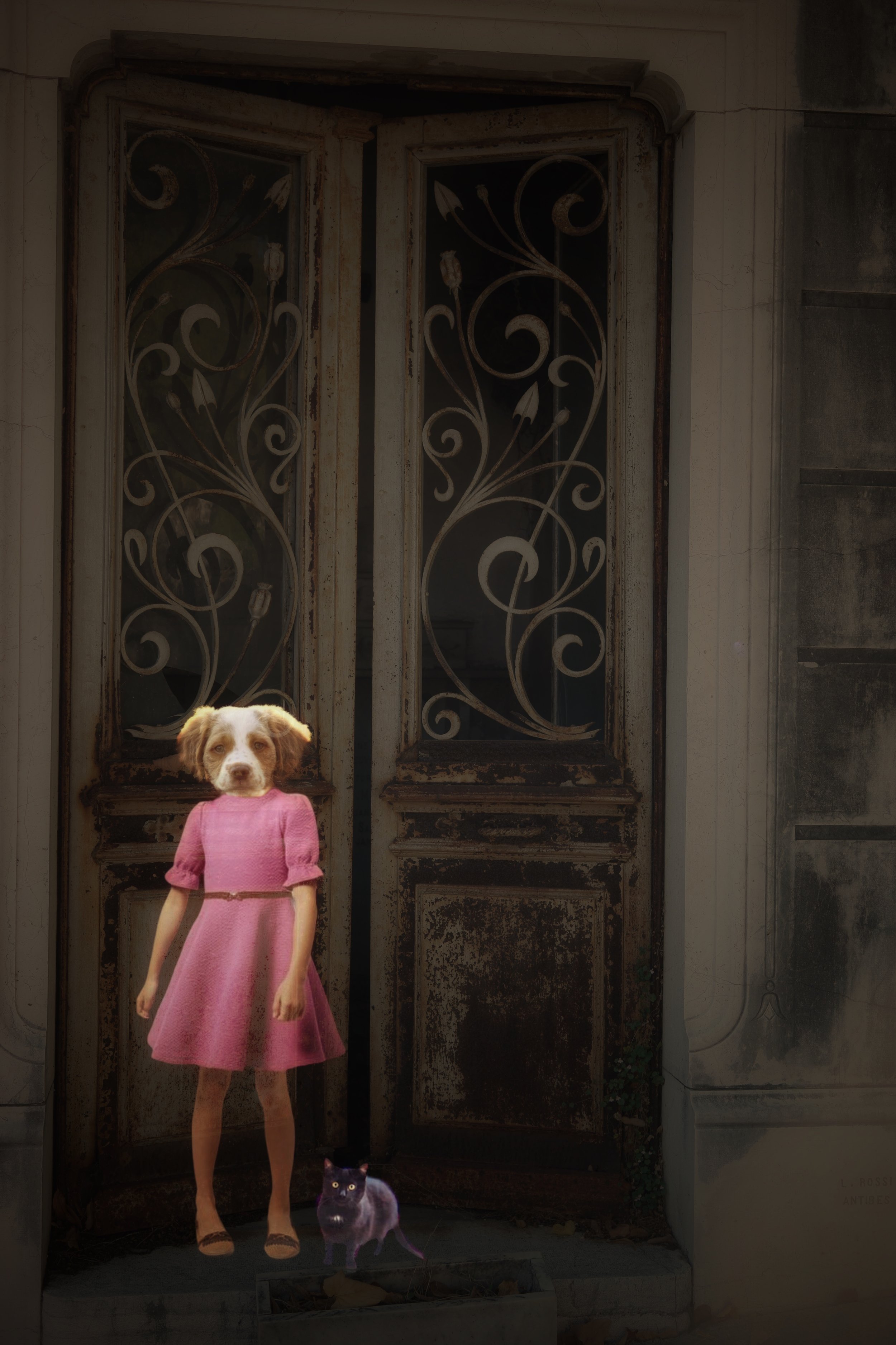Halloween
by Lola Minister
Halloween, like many celebrations, has become overly commercial. When I think back to my early childhood in the 60s, it was about friends coming round, hands behind our backs trying to pluck bobbing apples from a bowl with just our mouths. Or telling scary ghost stories around the fire.
Later, in Paris in the 80s, Halloween was about going to many fancy dress parties, oh those were the days! It's different now and though I have bought candy for the last 6 years no one ever comes by, we must be in the wrong part of town.
This year I decided to get on a bus and visit a cemetery in a nearby town to take shots, perhaps using some spiders and pumpkin toys but I couldn't use the props as it felt disrespectful. The cemetery in question was one I'd noticed before but not actually ventured into. It was serene, a beautiful place, even though some graves were in disrepair. I wandered round seeking out shots to use for a post but after an hour or so decided to take my leave, until...
Spin, in a whirl, wherever I looked these strange but adorable kids, dressed in strange headgear, were sat upon tombs or coming out of mausoleums, a party to my mood, they appeared just long enough for me to get off my shot, then vanished again.
Exultant, I made my way home, just wondering for a moment - as I caught sight of a pumpkin-headed woman on the bus - if perhaps my mind was playing tricks on me.
No matter, Halloween is here!
Halloween, which is short for All Hallows' Eve, is a holiday that takes place on October 31 each year. It is celebrated on the eve of All Saints' Day, a Western Christian feast day, and marks the beginning of the three-day season of Allhallowtide, which ends with All Souls' Day. Although Halloween is considered a non-religious holiday in most of Europe and North America, it has its roots in the Celtic festival of Samhain, celebrated in ancient Britain and Ireland.
Samhain was celebrated on the day that corresponds to November 1 on modern calendars, which was believed to be the start of the new year. During this festival, it was believed that the souls of the deceased would return to their homes, while those who had died within the year would make their journey to the otherworld. People would light bonfires on hilltops to both relight their hearth fires for the winter and scare away any evil spirits. They would also wear masks and other disguises to avoid being recognized by the ghosts believed to be present. This is how beings like witches, hobgoblins, fairies, and demons came to be associated with the holiday. Additionally, this period was thought to be an opportune time for divination on topics such as marriage, health, and death.
When the Romans conquered the Celts in the 1st century CE, they added their own festivals of Feralia, which commemorated the passing of the dead, and Pomona, which celebrated the goddess of the harvest. In the 7th century CE, Pope Boniface IV established All Saints' Day, originally scheduled for May 13th, but later moved to November 1st, perhaps in an attempt to replace the pagan holiday with a Christian observance. The evening before All Saints' Day was known as All Hallows' Eve and eventually became known as Halloween. By the end of the Middle Ages, the secular and the sacred celebrations had merged. The Reformation essentially put an end to the religious holiday among Protestants, although in Britain, Halloween continued to be celebrated as a secular holiday.
UNICEF has been encouraging Halloween trick-or-treaters to collect donations for its programs since the mid-20th century.
